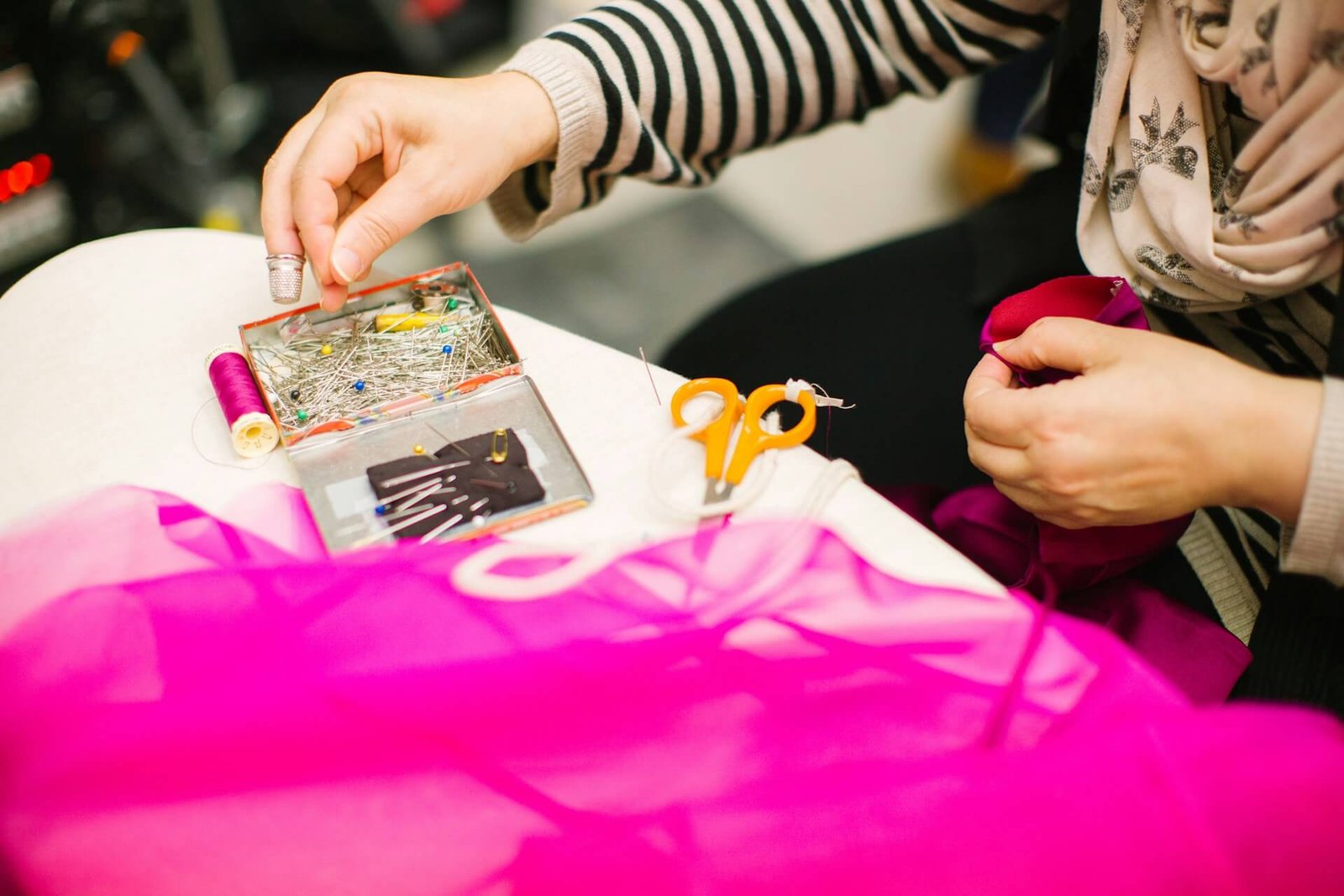Cut and sew clothing manufacturing is a method of producing garments where individual pieces of fabric are cut and then sewn together to create the final product. In this process, various fabric pieces are cut according to specific patterns and designs, and then stitched together by the cut and sew clothing manufacturers using sewing machines or other sewing techniques.
The cut and sew manufacturing process typically involves several steps:
- Design and pattern creation: The clothing design is conceptualized, and patterns are created based on the desired style and measurements.
- Fabric selection: The appropriate fabrics are chosen based on factors such as quality, texture, color, and functionality.
- Cutting: The fabric is laid out in multiple layers, and using the patterns as a guide, individual pieces are cut out using specialized cutting machines or tools. This step requires precision to ensure accurate sizing and alignment.
- Sewing: Once the fabric pieces are cut, they are then sewn together using sewing machines or sometimes hand stitching. Skilled workers stitch the fabric pieces according to the design specifications, attaching sleeves, collars, pockets, and other details.
- Finishing touches: After the main stitching is complete, additional details such as buttons, zippers, trims, labels, and tags are added. The garments may also undergo processes like ironing, pressing, and quality control checks.
- Packaging: The finished garments are folded, packaged, and prepared for distribution or retail.
Cut and sew manufacturing allows for a high level of customization and flexibility in clothing production. It is commonly used for producing small to medium-scale quantities, especially in the fashion industry, where unique designs and limited editions are often desired. This manufacturing method also allows for control over the quality of materials and workmanship, as each garment is individually crafted during the assembly process.
To become a custom cut and sew streetwear clothing line manufacturer, you will need to follow several steps:
- Research and Planning:
- Study the streetwear market and understand the latest trends, styles, and customer preferences.
- Define your target audience and create a unique brand identity for your streetwear clothing line. For example, you plan to become cut and sew hoodie manufacturer
- Develop a business plan that outlines your goals, strategies, and financial projections.
- Design and Development:
- Create original designs for your streetwear clothing line that align with your brand identity and target market.
- Hire or collaborate with skilled fashion designers who can bring your creative vision to life.
- Develop patterns and prototypes of your designs to ensure they can be successfully manufactured.
- Sourcing Materials:
- Identify reliable suppliers for the fabrics, trims, and other materials needed for your streetwear clothing line.
- Consider factors such as quality, cost, sustainability, and availability when selecting suppliers.
- Manufacturing:
- Find a suitable custom cut and sew manufacturers or sewing contractor who specializes in producing streetwear clothing.
- Visit different manufacturers, assess their capabilities, and request samples to ensure they can meet your quality standards.
- Provide the manufacturer with your patterns, designs, and specifications, and collaborate closely throughout the production process.
- Maintain clear communication and establish a production timeline to ensure timely delivery of your clothing line.
- Quality Control:
- Implement a rigorous quality control process to ensure that your garments meet the desired standards.
- Inspect samples and prototypes, as well as conduct regular inspections during production.
- Address any issues or defects promptly and work closely with the manufacturer to resolve them.
- Branding and Marketing:
- Develop a strong brand identity and create a compelling brand story for your streetwear clothing line.
- Invest in branding elements such as logos, labels, and packaging that reflect your brand’s aesthetics.
- Build an online presence through a website and social media channels to showcase your clothing line and engage with your target audience.
- Develop marketing strategies to promote your streetwear clothing line, such as influencer collaborations, fashion shows, and digital advertising.
- Distribution and Sales:
- Determine your sales channels, whether it’s through your own e-commerce website, physical stores, or partnerships with retailers.
- Develop pricing strategies that consider manufacturing costs, profit margins, and market competition.
- Establish relationships with retailers or distributors if you choose to sell your clothing line through wholesale channels.
Remember, starting a clothing line and becoming a custom streetwear cut and sew clothing manufacturers requires careful planning, attention to detail, and perseverance. It is essential to continuously adapt to market trends, listen to customer feedback, and maintain high-quality standards to succeed in the competitive streetwear industry.




